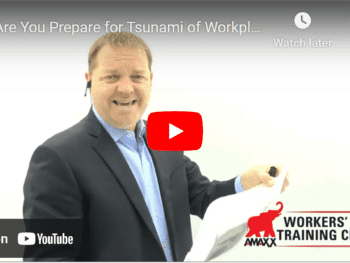
Almost all companies have organizational charts. Most companies, however, do not have a holistic view that outlines business processes, relationships and resources and how it all fits together. In short, a map that uses technology to support meeting organizational objectives.
Maps give options and technology provides insight that allows getting places quicker and more efficiently. As you are leaving work on a Friday at 5 PM it is certainly helpful to know what alternative routes are available. When your GPS takes you a different route because it can identify bottlenecks due to an accident, it just gave you another advantage.
Click Link to Access Free PDF Download
“The 5Cs to Taking a Bulletproof Injured Worker Recorded Statement”
Organizations are complex. They involve things like business processes, resources, people, policies, relationships, physical assets, applications and data repositories in the midst of dealing with risk, performance and readiness issues. When these things are captured and aligned in business silos it makes your commute (business objective) from point A to B even more challenging.
Business maps, unlike organizational charts, take into consideration the complete picture with a purpose, by design, to efficiently get you somewhere.
Making the Connections
No one knows everything in your organization. There is too much happening and it is constantly changing. To make good decisions, the goal is to find the critical paths, priority and resources that need to be involved.
Start by organizing by resource rather than by use or department. Once the resources are organized and defined, it makes it much easier to establish important relationships. For example, if your resources are defined and you use your business map to draw the lines/make connections between a “risk” that affects 3 different business processes in your organization and turn the solution into a collaborative vs. silo’d effort, you made progress.
Forward-thinking companies take advantage of technology that allows important connections to be made.
A Natural Starting Point
As noted by Michael Stack, a principle at AMAXX, workers’ compensation takes a village. When you have and need a village working together, a map is essential. In this very specialized business process area, you are traveling through some very complex neighborhoods and any wrong turn can be costly.
Wrong turns such as poor communication and delayed actions translate into missed opportunities.
How the processes, relationships and resources tie together in workers’ compensation is a system/map that works best when it is defined in a way that is transparent to the team involved.
When a holistic picture is concisely captured and communicated, it makes it much easier for stakeholders to contribute, provide support and make connections that translates into continuous improvement of your program.
Capturing the collaborative efforts of a village takes a clear map in the workers’ compensation space. For companies who have not made the leap to Enterprise Risk Management (ERM), this area becomes a perfect landing spot.
Applying ERM concepts to workers’ compensation programs allows organizations to demonstrate success and milestones that are transferable and build momentum to a broader ERM initiative.

Author Mark Bennett, Founder of Risk Innovation Group (RIG), is dedicated to helping large employers face the complexities of risk through innovative Enterprise Risk Management (ERM) practices. ERM programs don’t just help large employers manage business risks more effectively; a well-developed ERM program can protect and create value as well as improve business performance and generate a strong competitive advantage. Contact: m.bennett@riskinnovationgroup.com










